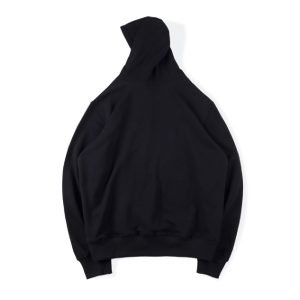In the heart of contemporary fashion, where trends often drown in the noise of fleeting popularity, a movement rooted in memory, culture, and denim tear resistance has emerged with striking clarity. Denim Tears, the brainchild of artist and designer Tremaine Emory, transcends the limitations of traditional fashion to stand as a powerful voice in the ongoing dialogue about race, identity, and history. Far from being just another streetwear brand, Denim Tears is a movement that wears its politics on its sleeves—literally. This is the story of a fashion line that remembers, reclaims, and redefines.
The Birth of Denim Tears
Tremaine Emory, known for his deep involvement in the fashion and music scenes and his creative collaborations with Kanye West, Frank Ocean, and Virgil Abloh, founded Denim Tears in 2019. The launch was no coincidence; it was timed to commemorate the 400th anniversary of the first enslaved Africans arriving in Jamestown, Virginia in 1619. This date, often cited as the beginning of the transatlantic slave trade’s impact on American soil, is central to the brand’s ethos.
The first drop from Denim Tears was a series of Levi’s jeans adorned with cotton wreath embroidery—a provocative and poetic visual that challenged consumers to remember the brutal legacy of slavery and the cotton industry. The imagery was not subtle; it was loaded with painful, yet necessary associations. The jeans didn’t just make a fashion statement—they made a historical one.
A Brand with a Message
Denim Tears is steeped in cultural commentary. It interrogates the relationship between African-American identity and American capitalism, particularly how Black labor was historically exploited for the building blocks of wealth in the United States. Emory’s designs do not shy away from discomfort. In fact, discomfort is a core component of the brand’s purpose. The clothing functions as both art and protest, sparking conversations around cultural memory and the erasure of Black narratives from mainstream history.
Unlike many brands that use cultural motifs for aesthetic appeal, Denim Tears centers Black history not as a trend but as truth. The clothing often includes references to slavery, segregation, civil rights, and Black creativity—issues that remain deeply relevant today. From Malcolm X iconography to Pan-African color schemes, every element is intentional, rooted in a larger conversation about power, oppression, and resilience.
Collaborations that Expand the Narrative
While Emory’s creative vision began with Levi’s, Denim Tears has since expanded through partnerships with influential brands such as Converse, UGG, Dior, and Champion. Each collaboration extends the platform’s reach while maintaining its uncompromising message. The Converse collaboration, for example, incorporated West African Kente cloth patterns into classic sneakers, merging diasporic traditions with American streetwear heritage.
These collaborations aren’t about commercial success alone. They serve as cultural bridges, allowing the Denim Tears message to enter spaces that might not otherwise engage with the history it represents. By positioning these narratives on global fashion stages, Emory ensures the stories of Black ancestors and their descendants are seen, heard, and ultimately remembered.
Fashion as a Form of Protest
What makes Denim Tears profoundly important is its ability to use fashion—a medium often dismissed as superficial or commercial—as a tool for education and protest. The garments operate as wearable history lessons, confronting consumers with uncomfortable truths about systemic injustice. Wearing Denim Tears is a conscious act of remembering, a quiet but powerful resistance against forgetting.
Emory has been vocal about the importance of historical literacy in the Black community and beyond. He sees fashion not just as expression, but as an archive—a way to preserve and pass down stories that history books often omit. In this way, Denim Tears challenges traditional notions of heritage fashion, turning denim—a fabric long associated with American workwear—into a canvas for remembrance and reclamation.
The Influence of Black Art and Music
Denim Tears draws heavy inspiration from Black art, literature, and music. Emory’s work is in conversation with the likes of James Baldwin, Toni Morrison, and Amiri Baraka. He views the brand as part of a larger cultural legacy that spans disciplines and generations. Music, especially hip-hop and soul, plays an integral role. Artists like Kanye West, A$AP Rocky, and Tyler, the Creator have been seen wearing Denim Tears, helping to amplify its message through their own platforms.
These cultural ties deepen the resonance of the clothing. When a pair of jeans bears cotton wreath embroidery, it connects the dots from the plantation fields of the 18th century to the stages of modern music festivals. This interplay of past and present, pain and pride, is what gives Denim Tears its emotional and aesthetic depth.
Educating Through Aesthetic
The visual language of Denim Tears is strikingly effective. From cotton motifs to flags bearing the colors of liberation, the pieces prompt inquiry. A consumer unfamiliar with the symbolism might ask, “Why cotton?”—and in asking, they begin to engage with the very history Emory wants us to confront. This visual pedagogy transforms the wearer into both student and teacher, inviting dialogue and reflection.
Unlike traditional classroom learning, this education happens in public, on the streets, on runways, and in social media feeds. It democratizes historical knowledge and insists that style and substance need not be mutually exclusive. Emory’s work proves that fashion can be a site of intellectual engagement—a place where aesthetic choices carry ethical weight.
Legacy and the Future
Denim Tears has already secured a place in the cultural lexicon, but its work is far from finished. Emory has hinted at expanding into other forms of storytelling, including exhibitions, films, and curated experiences that deepen the brand’s commitment to historical awareness. He envisions a future where fashion is a tool not just for profit, but for change.
In a time when social justice is often commodified or reduced to hashtags, Denim Tears offers something more enduring: a practice of memory. It refuses to let us forget the brutalities that shaped modern America, nor the brilliance and beauty that Black people have brought into the world despite those horrors. It is a testament to fashion’s power to do more than just clothe—it can provoke, heal, and honor.
Conclusion: A Movement Woven in Memory
Denim Tears is not just fashion—it is an archive, Denim Tears Tracksuit a protest, a love letter, and a reclamation. It forces the fashion world to look beyond trends and see the bodies, histories, and voices that too often go unacknowledged. Through every stitch and symbol, it asks a powerful question: What does it mean to remember?
In remembering, we honor. In honoring, we resist. And in resisting, we create something new—something deeply rooted in the past, but always reaching toward a more conscious future. Denim Tears shows us that style can be revolutionary, and that remembering is itself a radical act.





